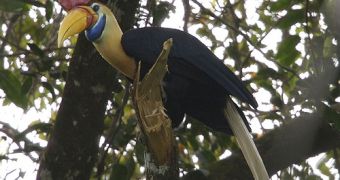On Earth, there are several protected areas that preserve wilderness and every one of them is a triumph for the preservation of nature, but if we take a closer look, we can see that on the ground, the reality is slightly different, and many rare species are ignored.
A new study carried out by Lisette Cantú-Salazar and Kevin J. Gaston of the University of Sheffield, United Kingdom, shows that some of the world's largest protected areas include large amounts of wilderness, but do not cover the highest priority areas for conservation, nor account for large numbers of birds, amphibians or mammals.
The two researchers examined closely the 63 protected areas of over 25,000 square kilometers, found in all continents except Antarctica.
Their study says that there is evidence that some of the very large protected areas actually play an important conservation role, by preserving natural species structures and populations of regional concern.
Nevertheless, there is a disturbing fact, that spoils the beauty of good intentions behind these protected areas: they are mostly found in areas where there are few people, and this leads to thinking that maybe their location was chosen to least disturb and inconvenience people, rather than to preserve most of nature's endangered species.
Still, Cantú-Salazar and Gaston say that it's not the same for every protected area, and that there are very large ones that also include special land-cover types like snow and ice, bare areas and areas containing sparse vegetation.
When looking at natural reserves individually, you realize that there are several ecoregions where conservation is the highest priority, that are partly included in very large protected areas, like Guianan Highlands Moist Forests, the Tibetan Plateau Steppe, and the Eastern Himalayan Alpine Meadows.
It is very important preserving them because many of the largest protected areas are actually quite vulnerable, some because of bad management, others because of incursions for logging, fishing, grazing, mining, the effects of climate change and political instability.
Cantú-Salazar and Gaston's analysis is published in the November issue of BioScience.

 14 DAY TRIAL //
14 DAY TRIAL //